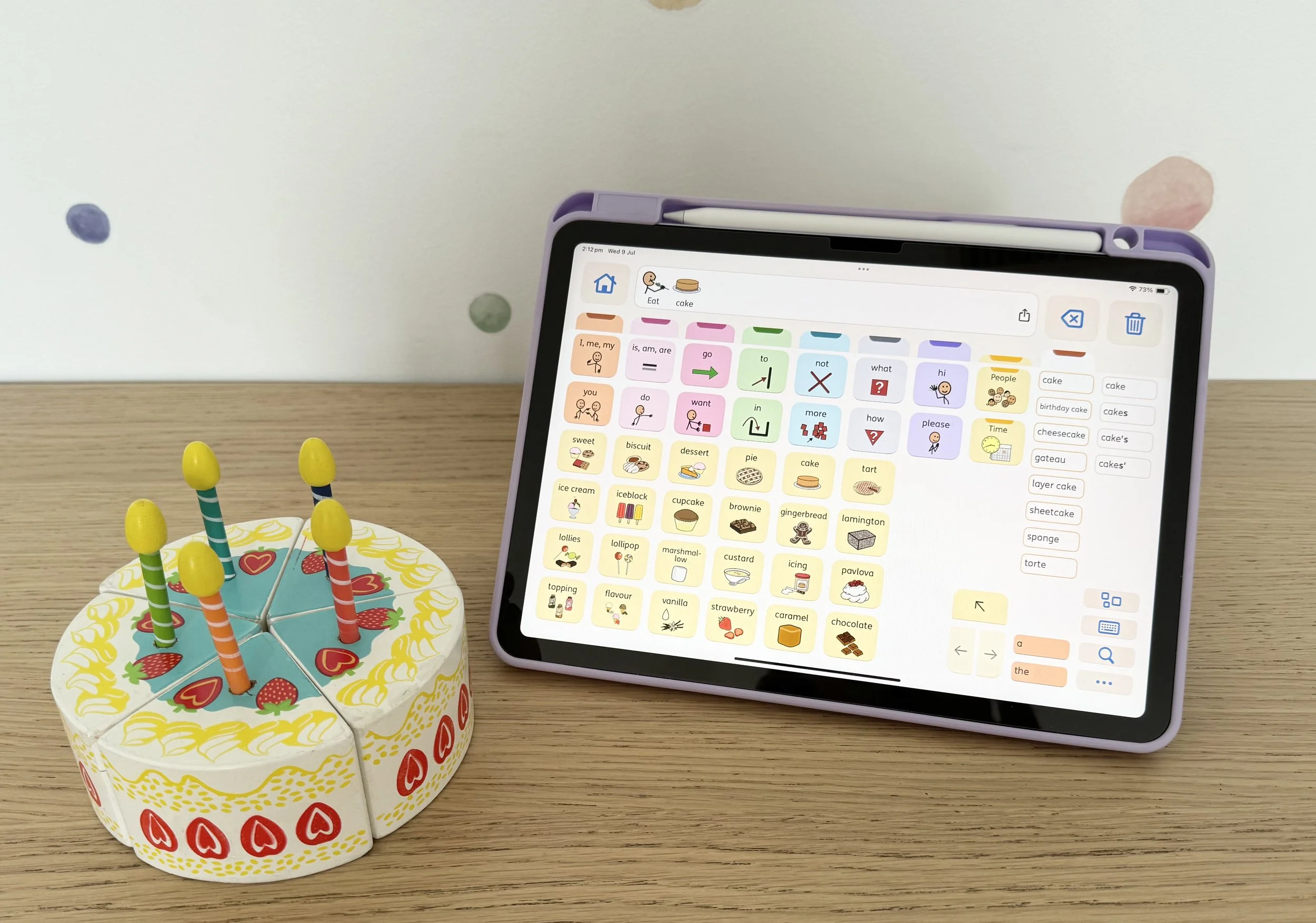Giving Every Child a Voice: Understanding AAC
Imagine your child wants to tell you something exciting, but the words just won’t come out. Or maybe they’re hungry, upset, or want a toy, but they don’t know how to tell you. As a parent, it's upsetting when your child can’t share what’s on their mind.
This is where AAC can make a big difference.
What is AAC?
AAC stands for Augmentative and Alternative Communication, which refers to using different methods of communicating to support a person who finds it difficult to communicate using spoken words.
Augmentative = adding to speech. For example, a child might speak a few words and also point to a picture to help you understand.
Alternative = using another way to communicate when spoken words are difficult or someone is unable to speak.
AAC can look different for every child:
Unaided AAC: is something that does not require a physical aid or tool, like gestures, facial expressions, pointing, or sign language.
Aided AAC: anything that requires a tool or materials — like picture boards, communication books, or high-tech devices and apps that generate speech.
The most important thing to know is that AAC works alongside speech. It doesn’t hinder children from using spoken words, but provides them with more ways to share their voice.
Who Uses AAC?
AAC isn’t just for one group of people. It can be helpful for:
Children who are non-speaking or have limited speech
Children who are difficult to understand
Children with developmental differences such as autism and cerebral palsy
And here’s something to keep in mind: all of us use alternative communication sometimes! Think about writing a note, sending a text, or using emojis; all of these are AAC too.
Why AAC is Important
Communication goes beyond just words. It’s how people express themselves, build connections, and engage in daily activities. AAC provides this chance for everyone, especially when speech is hard or absent.
Here are some important benefits:
Reduces frustration
Not being able to express yourself can lead to frustration, withdrawal, or behaviour challenges. AAC gives children a reliable way to be understood.
Builds language and learning
AAC helps children expand their vocabulary, grammar, and even literacy. It doesn’t limit language growth; it supports it.
Supports connections, friendships and deeper relationships
With AAC, children can join in games, answer questions in class, and share stories with family and friends, increasing their participation in everyday life.
Increased independence
AAC allows children to make choices and express their opinions. From what snack they want to what game they’d like to play. This builds confidence and self-advocacy.
More employment and volunteering opportunities
AAC gives children with difficulties using spoken language the confidence to participate meaningfully at school, in the community, and eventually in employment.
Improved mental health
Being understood has a big impact on confidence and well-being. When children can express their feelings, needs, and thoughts, they feel more connected and less isolated, which supports positive mental health.
Works with spoken language, not against it
This is the biggest myth. Research shows that AAC does not stop children from using spoken words. In fact, it can help speech develop.
Common Concerns Around Implementing AAC
“If my child uses AAC, won’t they stop trying to talk?”
No. AAC supports communication. Children may continue to develop speech while also using AAC.
“Isn’t speech the ultimate goal?”
Speech may be a goal, but communication is the priority. AAC gives your child a voice now.
“Will AAC make language development slower?”
Not at all. AAC can actually support language development by giving children access to words and concepts they might not otherwise be exposed to.
How Parents Can Help
You play a big role in making AAC successful. Here are some simple ways to support your child using AAC:
Model it: Use AAC yourself while talking to your child. For example, if you say “Let’s eat,” also point to the “eat” symbol.
Embed it in everyday life: Use AAC during meals, playtime, shopping, bath time — all the time really! We never want to take it away, as this is their voice.
Be patient: Give your child time to respond. Silence is okay while they find their message.
Get everyone on board: Show siblings, grandparents, teachers, and carers how to use AAC too.
Celebrate every step: Every use of AAC, a gesture, a button press, a symbol, is real communication and worth celebrating!
AAC isn’t about giving up on speech, It’s about making sure your child can be heard, understood, and connected with others right now.
We cannot know for certain if spoken speech will come for some children. But what we do know is that AAC always gives them a voice. It ensures they can share their thoughts, needs, and personality (whether speech develops later, partly, or not at all).
For many families, AAC opens doors to independence and confidence. Every child deserves a voice, and AAC helps them share theirs in the way that works best for them.

